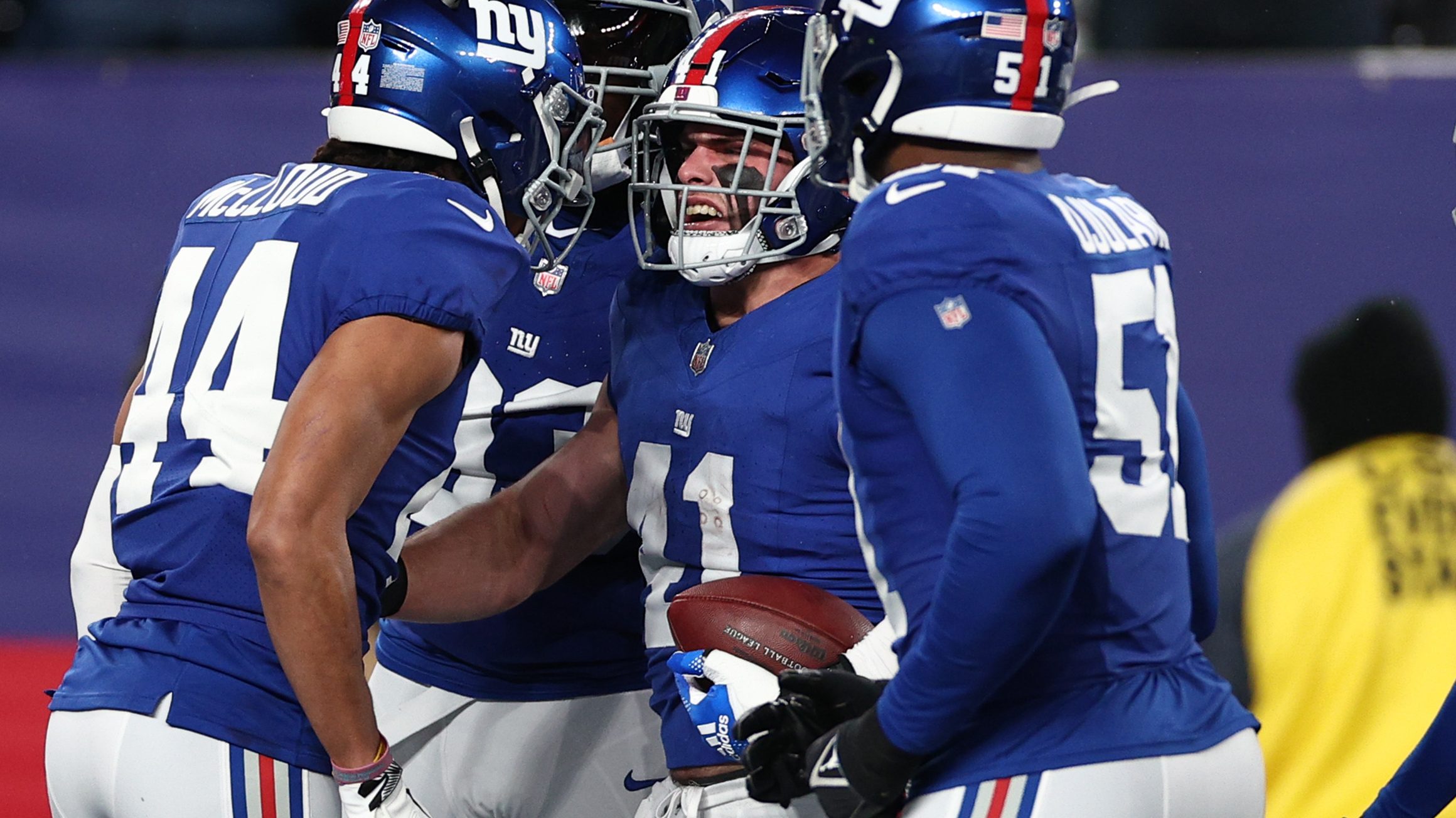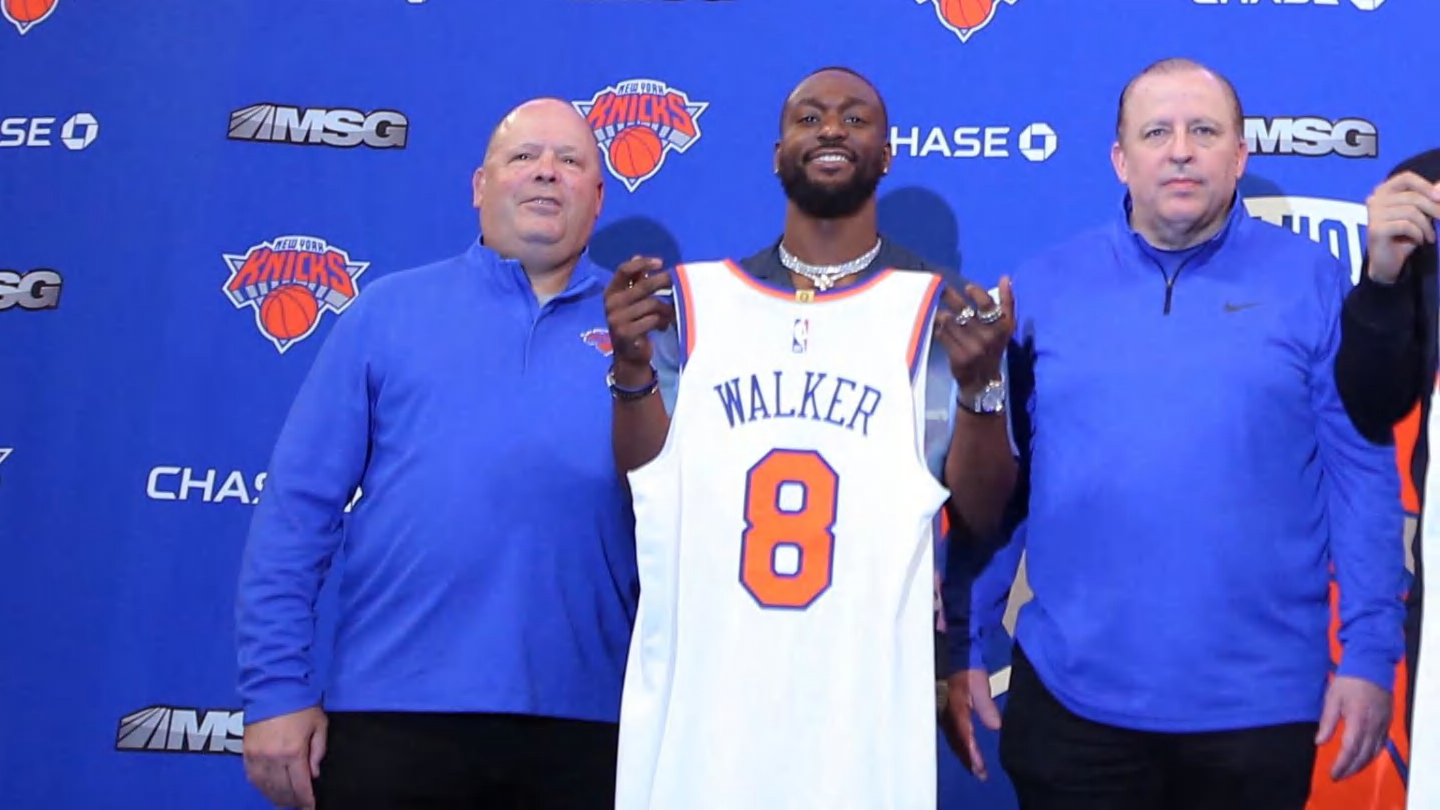NBA
How NBA defenses take away the 3-point line, other than just praying

You can’t talk about the NBA playoffs without discussing the role of the 3-point shot.
From New York Knicks guard Donte DiVincenzo and Indiana Pacers guard Tyrese Haliburton making a combined 13 3s in Game 3 of their second-round series to the Boston Celtics hitting 18 from behind the arc, burying the Cleveland Cavaliers in Game 1 of the Eastern Conference semifinals, the 3-point boom is far from over.
This season, the league set a record for 3s made per game (12.8) and shot 36.6 percent from deep, the fourth-highest mark in league history. Offense tends to dominate the conversation, but teams must think about defending at a high level too. So, what does it take to defend the 3-pointer?
“Man, pray they miss,” Miami Heat All-Star center Bam Adebayo said. “You got a lot of guys in this league that make shots. And I mean tough shots. The biggest thing for us is making every shot difficult. So, you can’t really say you’re going to stop a guy. You just make every shot difficult.”
The Athletic spoke to more than a dozen NBA coaches and players throughout the season about this phenomenon. According to Los Angeles Lakers star LeBron James, teams have to make some hard choices.
“Each game is going to dictate what your defense allows you to do or what you want to take away,” James said. “NBA players, you can’t take away everything. Guys are going to score, guys are going to shoot 3s, guys are going to put up numbers. You can’t take away everything. It’s what you’re willing to give up, not what you want to take away.”
We’ve come a long way since the NBA adopted the 3-point line in 1979-80. Not only are players shooting more from 23 feet and beyond, but they are actually taking and making shots from longer distances as well.
“The players are too good, guys are making shots from half court,” Milwaukee Bucks star Giannis Antetokounmpo said. “Everybody can shoot the ball. Even the guys that aren’t known as 3-point shooters, they can still shoot the ball.”
Arguably, NBA defense has never been harder. This season, the NBA saw the fewest fouls ever (18.7 per game), second-fewest free-throw attempts of all time (21.7 per game) and the ninth-lowest offensive rebound average (10.6 per game).
While there’s an understanding and even a resignation that teams are going to make 3s, defenses can’t stop everything. What’s the relationship between how well teams defend from downtown and how they approach defense overall?
When the Denver Nuggets last missed the postseason, in 2017-18, Michael Malone’s team had a 46-36 record, but opponents shot an NBA-high 37.8 percent against Denver from 3. Malone knew something needed to change.
“We spent a lot of time looking at the top teams in the league and how they guard that allows them to be an elite 3-point defensive team,” Malone said. “And I’d say, you can use any game plan you want, but if you don’t have multiple effort and just a great fly-around mentality, you’re going to get burned from the 3.”
The Nuggets have come a long way since 2018. They are now defending champions and ranked second in fewest 3s allowed this season. Malone credits that success to defending pick-and-rolls differently from most teams.
“If you watch most pick-and-roll defenses throughout the NBA, most bigs will be down the floor,” Malone said. “And the reason teams have gone to that, when I first got in the league 20-plus years ago, teams were showing — they were aggressive. And as the 3-point shot increased, people realized, well, if we want to take away the 3, let’s try to guard with the big down the floor, more two versus two, so we can stay home with shooters.
“Well, we don’t do that. We have Nikola (Jokić) and our bigs at the level. And that requires your weak side and your smalls to have a tremendous multiple effort fly-around mentality.”
The NBA’s best defense this regular season belonged to Minnesota. The Timberwolves took advantage of center Rudy Gobert’s elite rim protection to make things challenging on perimeter offenses, using the length and athleticism of wing defenders Jaden McDaniels and All-Star Anthony Edwards. While that left the Timberwolves vulnerable in the midrange, they happily accepted that trade-off.
“A lot of it just comes down to your level of shot contest,” Minnesota coach Chris Finch said. “Fortunately, we have good length; generally, we can get good contests there. But then, you got to keep them out of the heart of your defense. They get there in a variety of ways, whether it be pick-and-roll or post-ups or nail isolations, and they draw a crowd. So, then it becomes a closeout game.”
Like the Timberwolves, the Celtics have premier rim protection and focused on taking the paint away. (Boston’s rim protection numbers haven’t been nearly as impressive in the postseason with the calf injury that has sidelined Kristaps Porziņģis, but the team has allowed fewer points in the paint through its first eight playoff games as well.) Boston also had the NBA’s best free-throw attempt rate allowed, but the Celtics were in the middle of the pack in 3s allowed.
Being average at defending the 3 is something the Celtics can be content with; after all, while they allowed 12.9 3s per game (15th in NBA), they made a league-best 16.5 per night. Getting caught up in a 3-point shooting contest with the Celtics is playing their game.
“I look at the guys we’re playing against, what their percentage is, what their attempts are,” Boston coach Joe Mazzulla said. “Are they in transition? Are they in half court? Are they pick-and-pop? Just try to evaluate where they’re getting their shots from and how we can take those away.”
The Oklahoma City Thunder, another team that determined the numbers favor its style of play, claimed the West’s top seed. If you want to shoot 3s against them, you’d likely find plenty of opportunities, as only four teams allowed more 3-point attempts than Oklahoma City this season.
“It’s tough,” Thunder All-Star Shai Gilgeous-Alexander said. “Guys have become so good at it, shooting it from so far. You just got to try to get up in guys’ air space and run them off the line.”
But as Thunder coach Mark Daigneault explained, Oklahoma City sees other areas on the floor that demand more attention than prohibiting 3-pointers.
“It’s a 3-point shooting league,” Daigneault said. “But free-throw trips are still more efficient than 3s. Layups are still more efficient than 3s, transitions are still more efficient than 3s. And not all 3s are created equally. You know, the ones that are paint-created and the ones that come inside out tend to be more catch and shoot, more open and go in more.”
Monday night’s Game 4 in Dallas was a validation of Daigneault’s defense surviving in part by playing the percentages. In the first half, the Mavericks led 54-43, made 47.7 percent of their field goals and 9 of 21 3s (42.9 percent). P.J. Washington made more first-half 3s (3 of 7) than the entire Thunder team (1 of 11).
That changed in the second half as the Thunder got misses from distance while defending everything else. Dallas’ field goal percentage dropped to 34.1 percent and it made only 3 of 14 shots from behind the arc. Washington, too, was impacted as the Thunder closed the distance and time between his catch-and-release.
“So, we do give up a lot of 3s,” Daigneault said. “We have given up a lot of 3s over the last couple of years. But we try to dictate what the 3s are that we’re giving up.”
The LA Clippers weren’t a strong overall defense this season, and their defense against 3s took a hit as the year went on. But they also had several games where they had to protect leads, and they showed the ability to lock in and defend great shooting teams. As Clippers forward Kawhi Leonard noted, it’s all about how you adapt to the matchup.
“You work on your team concept, pretty much,” Leonard said. “Depending on who you’re playing or the team you’re playing or the player that you’re closing out against, you adjust.”
In a historically great season for NBA offenses, 3s will continue to be a major part of the playoffs. Defending the 3-pointer requires a certain level of focus, attention to detail and, as Clippers guard Paul George notes, sometimes a little luck.
“It’s not even going to come down to getting stops,” George said. “It’s coming down to if the guy makes it or not, because it’s impossible to get stops. … To be honest, I don’t know how you fix it.”
(Photo of Nikola Jokić shooting a 3-pointer over Anthony Davis: Keith Birmingham / MediaNews Group / Pasadena Star-News via Getty Images)









